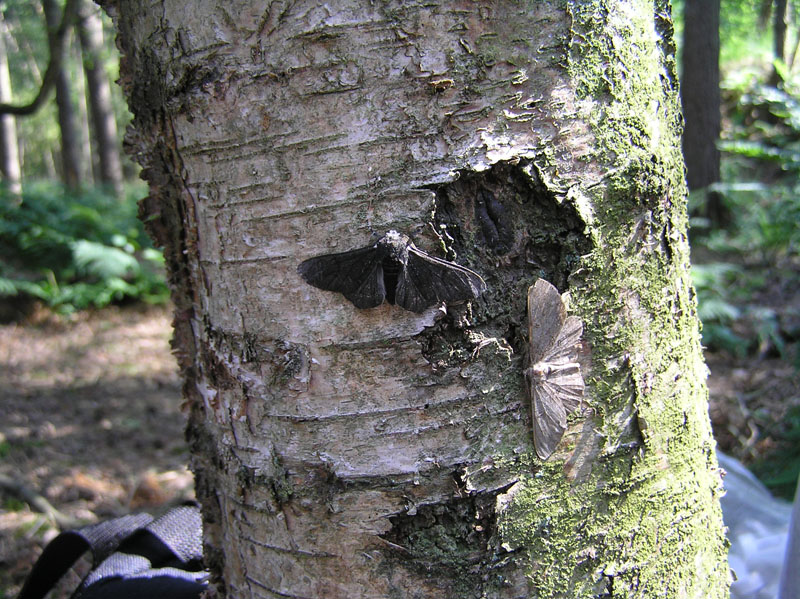 |
| A predator prepares to feed. |
1. The predator
2. The data recorder
3. The Benevolent Hand of Nature
We started with a population of colored dots, which all represent specimens of some species of organism. They are the prey for our predators. The phenotype of these organisms causes them to appear as either red, blue, yellow, or white. To begin with, these organisms were living in an environment (represented by a large sheet of paper) that was yellow.
First, the Benevolent Hand of Nature placed a specific number of dots into the environment. Then, the data recorder took stock of the numbers. When signaled, the person in the role of the predator was to look at the paper and then immediately grab ("eat") the first dot that they saw. Then they'd look away until they were signaled to pick another one.
This simulated a situation in which a predator was hunting, spotting, and eating prey. After each "feeding," the surviving dots would reproduce a new generation of offspring. Blue dots spawned more blue dots, yellow dots spawned more yellow dots, and so on. Then we began a new round of feedings. The data recorder kept track of the changing population numbers, while the Benevolent Hand of Nature made sure to make sure that the dots were stocked in the environment appropriately.
After several rounds, trends emerged. The yellow dots seemed to be quite prolific in this environment, and they went on to have many offspring after each round. The blue and red dots were less successful.
Then, their fortunes changed.
We simulated a change in the environment by switching from a yellow background to a red one. This could have represented any number of changes in nature; cloudy water, deforestation, industrial pollution, etc. With this change, suddenly the yellow dots became much more visible to our hungry predators. We saw their population growth level off accordingly.
We also revisited the idea of recessive traits, first discussed a few months ago during our Identity theme. Red dots, which had largely disappeared from the environments of most groups, spontaneously reappeared when we declared that a certain number of the white dots had been carrying a recessive gene for red. Though there were only a few that were reintroduced, the fact that they were now living in an environment that effectively camouflaged their presence buoyed our optimism about their chances to rebound.
After a class discussion spent sharing observations and theories about what we had seen, we concluded with the famous story of the Peppered Moth. It's a great example to help conceptualize natural selection, both as an idea, and the occasional controversies that surround it. Ask your student to tell you about the story of the changing appearance of the Peppered Moths!
Having laid this groundwork, we'll be wrapping it into our study of Big Foot. What traits might he/she/it possess that would make it successful (or unsuccessful) in the environments in which it is supposed to exist? What about other cryptids and mythological beasts?





No comments:
Post a Comment